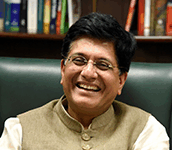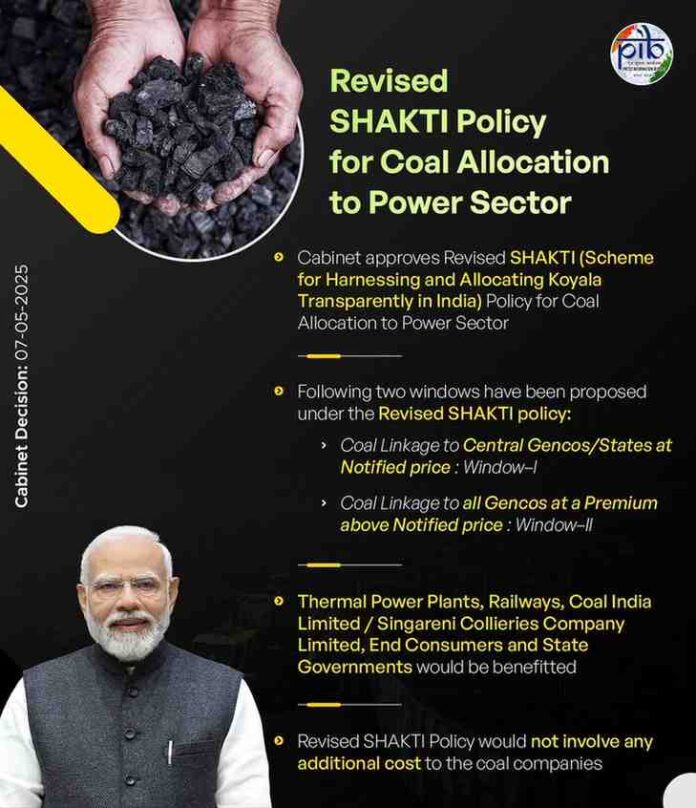May 7:
In a landmark decision aimed at enhancing efficiency and flexibility in coal allocation, the Cabinet Committee on Economic Affairs chaired by Prime Minister Narendra Modi has approved the Revised SHAKTI Policy for granting fresh coal linkages to Central, State, and Private Sector Thermal Power Plants (TPPs).
The new framework condenses the earlier eight coal allocation categories into two simplified windows, promoting ease of doing business:
-
Window-I: Coal linkages at notified price for Central/State Gencos and identified Independent Power Producers (IPPs) via existing Power Purchase Agreements (PPAs).
-
Window-II: Coal linkages through auction at a premium over the notified price, available to any domestic coal-based or imported coal-based plant, with or without a PPA, for durations ranging from 12 months to 25 years.
The revised policy allows power producers flexibility in sourcing coal based on their operational needs while giving them the liberty to sell electricity through open markets, encouraging competition and better pricing for consumers.
Key highlights include:
-
Coal import substitution through domestic sourcing for ICB plants.
-
Support for new thermal capacity via linkage access even without long-term PPAs.
-
Preference for pithead power plants to reduce logistics cost and improve efficiency.
-
Coal linkage rationalization to cut power tariffs and decongest rail networks.
-
Empowered Committee to manage operational issues.
-
No additional financial burden on coal companies for implementation.
This move is expected to benefit a wide range of stakeholders — including Thermal Power Plants, Coal India Ltd, SCCL, Indian Railways, end consumers, and State Governments — while also boosting employment and infrastructure development around coal-bearing regions.
With this reform, the government aims to not only stabilize coal supply but also encourage new investments in thermal power generation, ensuring energy security and sustainability for India’s growing electricity demand.


















